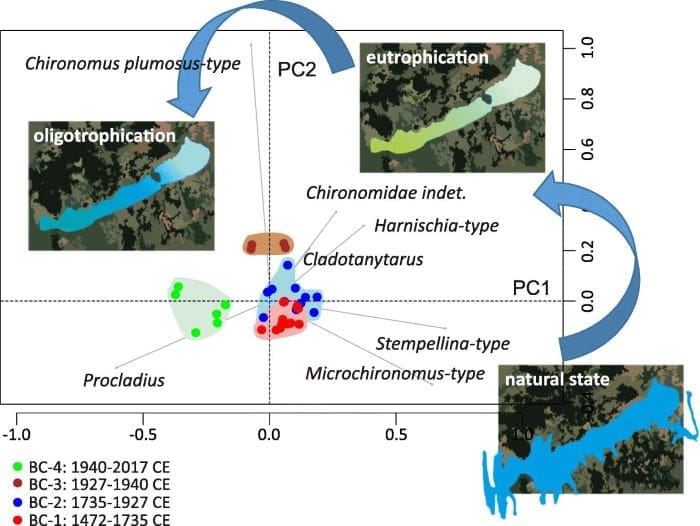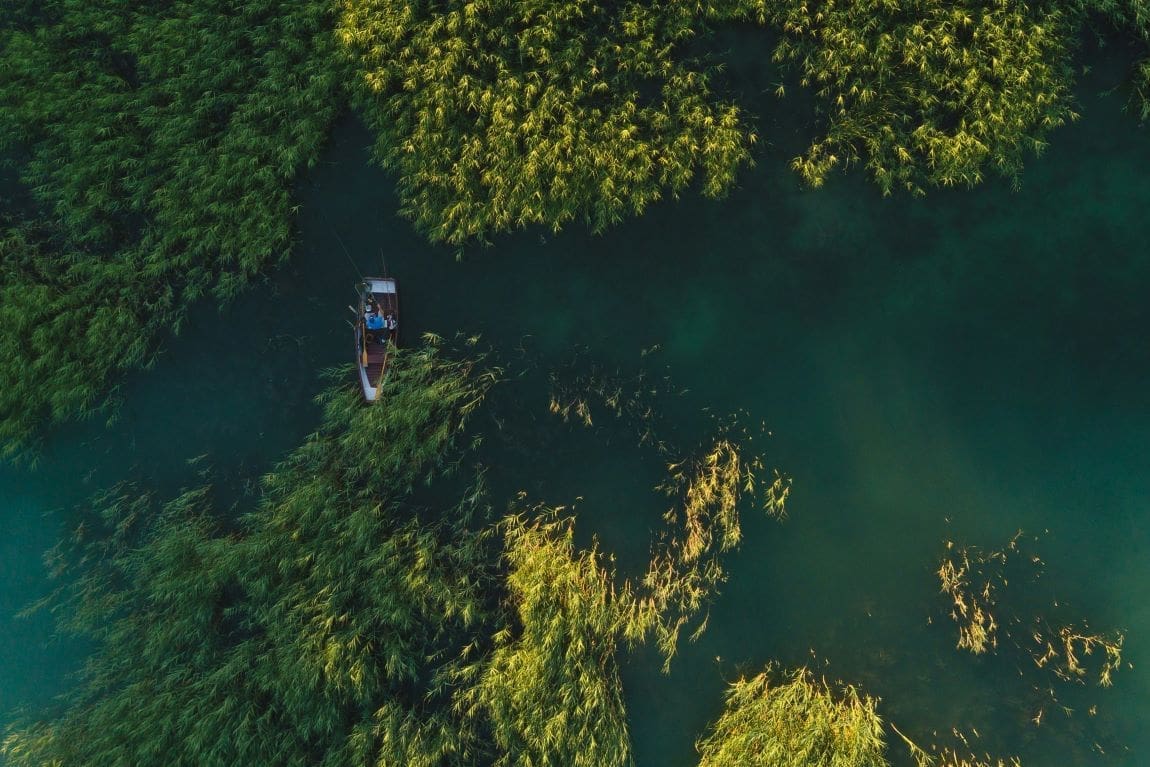By Eötvös Loránd University (ELTE)
What was Lake Balaton like in its natural state, and when did it change? Can its near-natural condition still be restored? These are the questions the researchers from ELTE Science Faculty’s Paleoenvironment and Climate Change Research Group sought to answer in their latest study, where they also made specific recommendations for the protection of the lake.
According to the recently adopted Nature Restoration Law (NRL) by the EU, member states are required to restore at least 30% of the habitats covered by the law by 2030. But what could be the target state for Lake Balaton?
Many may recall blue-green algae blooms from their childhood, when the toxins produced by the algae mass caused skin irritation and created a less-than-ideal water surface for vacationers.
In the 1970s and 1980s, Central Europe’s largest shallow lake, Balaton, received uncontrolled nutrient loads, leading to eutrophication—initially causing the spread of aquatic plants and later algae blooms. However, Lake Balaton is one of the few lakes worldwide where successful water quality protection measures, starting in 1994, led to significant improvements in its condition, albeit with a decade-long delay.
Researchers were optimistic about the lake’s future until 2019, when, despite low nutrient loads, recurring summer algae blooms began. This is due to internal phosphorus loading, where previously settled phosphorus compounds dissolve back into the water from oxygen-depleted sediments.
Although recent summer droughts have raised concerns about the lake’s water level, it is important to note that these phosphorus backflows are related to the high summer water levels maintained in the lake. To understand why we should not be alarmed by occasional low water levels and what can be done to protect Balaton, we need to look into the geological recent past.
The lake, which formed around 17,000 years ago and has had a more or less continuous water surface for about 10-11,000 years, has experienced numerous water level changes throughout its history.

In their recently published article in the July issue of Science of the Total Environment, the Paleoenvironment and Climate Change Research Group associated with the Climate Change National Laboratory and Élvonal grant, led by Enikő Magyari, examined the last 500 years of Lake Balaton, analyzing changes in the lake’s macroinvertebrate fauna up to the end of the Ottoman period.
The goal was to reconstruct the lake’s natural, pre-human impact fauna in the Szemes Basin, thus establishing a reference state for conservation purposes.
The researchers particularly examined the chironomid fauna, whose tiny, water-dwelling larvae are sensitive indicators of environmental changes. Their community composition alters if, for example, the sediment’s grain size changes, if there is a sudden decrease in available oxygen, if significant amount of organic deby is deposited on the lake bed, or if fish populations suddenly increase and consume the slow-moving, detritus-eating species.
Interestingly, the most intense and irreversible changes in the macroinvertebrate fauna occurred during the economic boom between the first and second world wars (post-Trianon), a period of extensive lake construction and recreational use, between 1925 and 1940.
During this time, the chironomid community completely transformed, with the Stempellina species, characteristic of the lake, disappearing from several basins. Following a temporary dominance of an oxygen-tolerant species (Chironomus balatonicus), a predatory chironomid species (Procladius choreus) became dominant from 1940.
The changes in the chironomid fauna since the 1470s coincide with deforestation around the lake, increased shoreline erosion, and the onset of strict water level regulation, which limited water level fluctuations. The size of the chironomid population has significantly decreased since 1940, and researchers found no evidence that the reduction in nutrient loads since 1994 impacted the chironomid fauna.
However, they demonstrated a strong correlation between the increase in benthivorous fish populations and the decline in the chironomid population, indicating that fish stocking also had a significant impact. Due to the overstocked and over-maintained fish populations, chironomids, which play a crucial role in phosphorus removal, cannot perform this vital ecosystem service. Remember, Lake Balaton would naturally be an oligotrophic-mesotrophic system, with limited capacity to support fish fauna.
What does an oligotrophic-mesotrophic system mean? The term oligotrophic refers to water with low nutrient levels, primarily nitrogen and phosphorus. In contrast, mesotrophic waters have more nutrients and exhibit a slight increase in biological production. Lake Balaton is characterized by a west-east meso-oligotrophic gradient, with higher biological production near the Zala inflow, such as in the Keszthely area, and very low production near Siófok.
Therefore, researchers suggest that the fish fauna should be reasonably reduced.
They understand that regulated fishing is a major tourist attraction at Balaton, but hope their research will help people understand the principles of sustainable functioning of ecosystems like Lake Balaton and agree on the necessity of regulations to enjoy the lake’s recreational activities for longer.
And what is the natural state we can set as a goal?
The researchers proposed that the reference lake state for restoration should be between 1740 and 1900, after the high summer water levels characteristic of the Ottoman period, when the lake’s water regime was similar to today’s.
They emphasized that the natural characteristic of Central Europe’s largest shallow lake is natural water level fluctuation, and its natural biotic communities are adapted to this, so we should not fear occasional low summer water levels concerning the lake’s wildlife.
Journal Reference:
E.K. Magyari, Z. Szabó, Gy. Falus, A. Móra, Z. Szalai, L. Hamerlik, M. Tóth, Á. Farkas, P. Pomogyi, B. Somogyi, L. Vörös, J. Korponai, ‘Large shallow lake response to anthropogenic stressors and climate change: Missing macroinvertebrate recovery after oligotrophication (Lake Balaton, East-Central Europe)’, Science of The Total Environment (2024). DOI: 10.1016/j.scitotenv.2024.174191
Article Source:
Press Release/Material by ELTE Faculty of Science
Featured image credit: Bence Boros | Unsplash




